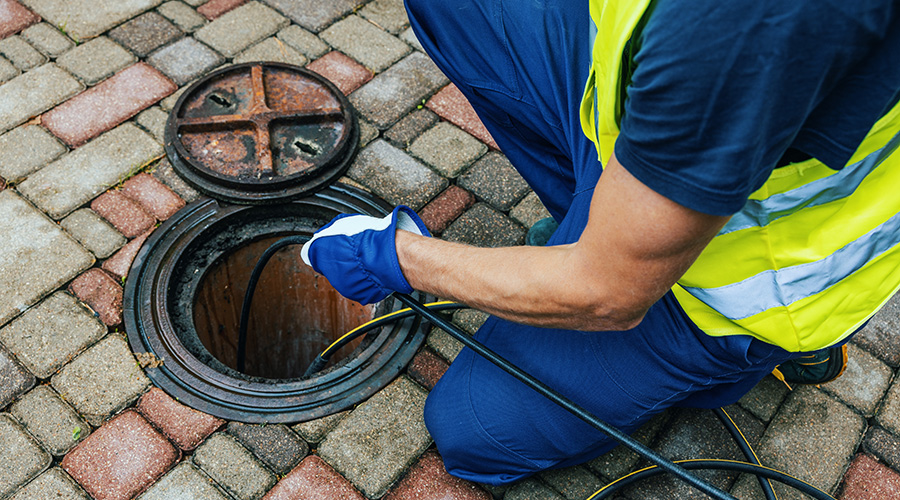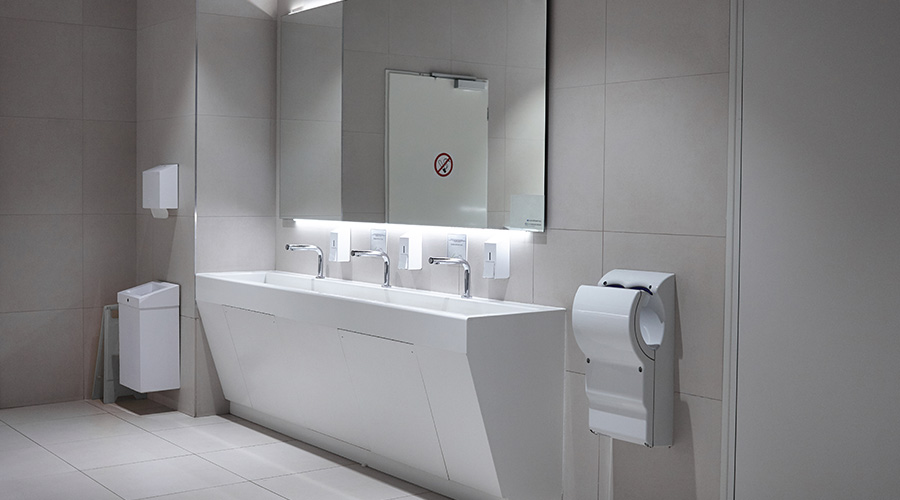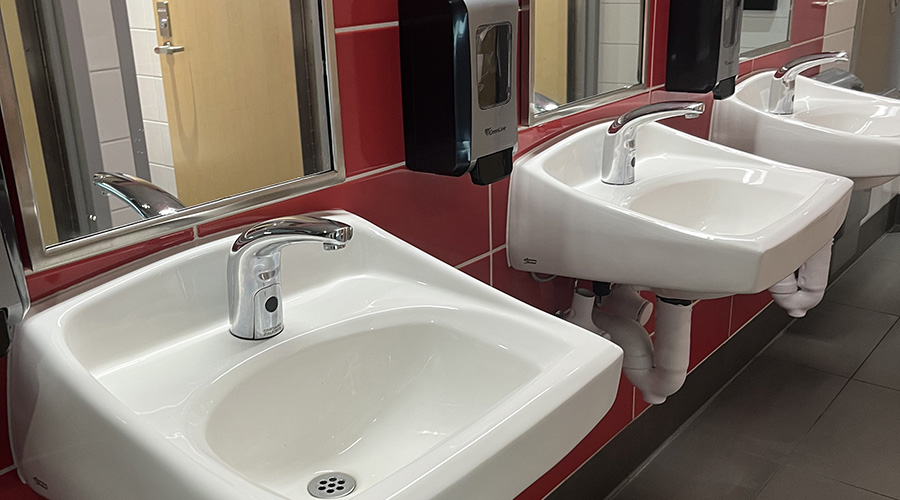Tips for Maintaining Restrooms with Waterless Urinals
Installing or retrofitting restrooms with waterless urinals is relatively straightforward and simple. Most waterless urinals attach to the wall, similar to traditional urinals. The only difference is installers do not need to connect these urinals to existing water lines.
When retrofitting traditional urinals, installers must cap the water-supply lines. Depending on the valves on a building’s water lines, this might require draining part of or the entire building. The only plumbing connection in retrofitting waterless urinals is at the existing gravity drain.
Before beginning a retrofit with waterless urinals, managers must consider several factors, namely that:
• the piping has adequate drain slope; 1/4 inch per foot typically is recommended
• installers use suitable piping materials
• existing piping is cleaned with a power snake
• installers follow the manufacture’s instructions.
Maintaining waterless urinals is not much more difficult than maintaining conventional urinals. As with traditional urinals, housekeepers should clean and disinfect waterless urinals daily.
In high-traffic areas, cleaning should occur more frequently. Depending on the manufacturer of the liquid-sealant cartridge, replacement might depend on elapsed time or the number of flushes. It can range from three months to six months or 1,500 uses to 7,000 uses.
For urinals without cartridges, housekeepers should perform a bi-weekly flush-out, which entails purging the urinal with 1 gallon of water to force out remaining liquid sealant and waste.
The next step involves using a recommended cleaning agent. A worker should pour 2 more gallons of water into the urinal drain to clean the piping. The final step is to replace the liquid sealant. Dry-type cartridges do not require replacement, but workers should remove them regularly and flush any sediment.
Keeping a log is helpful to track sealant and cartridge changes and maintenance, as well as providing the exact manufacturer specifications regarding cleaning agents and maintenance procedures.
One benefit of liquid-seal waterless urinals is they contain no mechanical devices, meaning workers do not need to repair or replace flush valves. While managers will not need to worry about stocking valve bodies or components such as diaphragms, they will need to stock sealant and cartridges.
Dry waterless urinals have few moving parts, so they share similar benefits of the liquid-seal urinals. But dry units do not require sealer or the replacement of regular cartridges.
Related Topics:
















